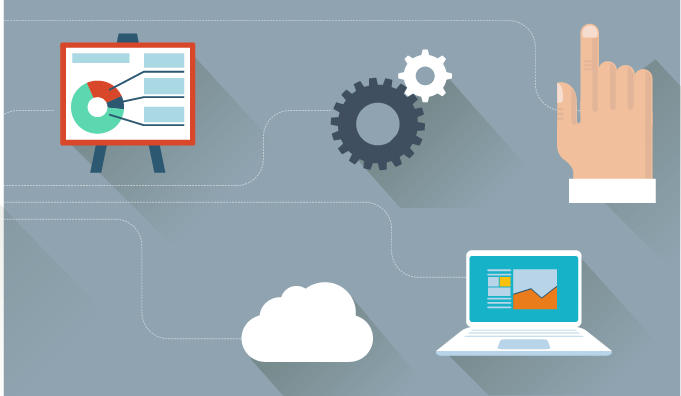The world of IT has undergone a dramatic transformation in recent years. With the rise of technology and the increasing complexity of IT systems, the demand for IT support has also increased significantly. This has put a strain on IT help desks, which are often overwhelmed by the volume of support requests they receive. However, a new approach to IT support is emerging that promises to reduce the burden on help desks and improve the overall IT support experience: self-service.
Self-service IT is a model in which users can access information, tools and resources to resolve their IT issues without the need for intervention from the IT help desk. This can take many forms, including knowledge bases, FAQs, troubleshooting guides and self-service portals. By providing users with the tools they need to solve their IT issues, self-service can help reduce ticket volume and resource drain on the IT help desk.
One of the main benefits of self-service is that it allows users to resolve their issues quickly and efficiently. Instead of having to wait for assistance from the IT help desk, users can access the information and resources they need to fix the problem themselves. This can save time and reduce frustration, as users can resolve their issues more quickly and get back to work.
Self-service can also help reduce the workload on IT help desks.
By providing users with the tools they need to resolve their issues, help desk staff can focus on more complex issues that require their expertise. This can help improve the overall efficiency of the IT support team, as well as reduce the risk of burnout and turnover among help desk staff.
Another benefit of self-service is that it can help improve the overall quality of IT support. By providing users with access to knowledge bases, FAQs and other resources, self-service can help ensure that users have access to accurate and up-to-date information. This can help reduce the number of support tickets that are submitted due to user error or misinformation, as users can access the information they need to resolve their issues.
In addition to these benefits, self-service can also help improve user satisfaction with IT support. By providing users with the tools they need to resolve their issues, self-service can help empower users and give them a sense of control over their IT experience. This can help improve user confidence in IT support, as well as reduce the frustration and stress that often come with IT issues.
The Importance of an Easy-to-Use Portal
It’s important that your portal is easy to use because if it’s not, users won’t feel empowered to answer their own questions. They’ll go straight to the service desk to help them, doing anything they can to avoid using the portal because what they want is for their problem to be solved quickly.
In a situation where a customer uses an easy-to-use self-service portal, the time spent resolving their issue will be less than if they put in a ticket to have an IT employee help them. However, if the portal is confusing and difficult to use, getting human intervention will be seen as the faster way to fix the problem.
This was the case at MarketLab, a medical supply company based in Michigan.
Prior to TeamDynamix, MarketLab was using Microsoft SharePoint to manage its service and support, but it quickly outgrew SharePoint’s capabilities.
Because SharePoint wasn’t designed specifically for IT ticketing, IT staff were spending too much time making changes to the various forms they used to collect information on IT incidents and problems. In addition, those changes would often break reports the team relied on, causing additional work to be done to remedy any errors.
And since it was much simpler for company employees to email the IT department to request service instead of logging into SharePoint and filling out a form, most employees opted for this route instead—which meant the IT department had no way of tracking those requests and often had to go back and forth to get all the information needed to create the ticket themselves before addressing the employees’ issues.
MarketLab switched to TeamDynamix ITSM about a year ago, and Enterprise Systems Engineer Brendan Lesinski said the new system is “universally loved.”
“We wanted a tool that could be used as a service portal for potentially anything, as well as project management,” he said. “We found a lot of the other tools we were looking at were very hyper-focused on just ticketing or just project management, which is fine, but we wanted a tool that could do it all and be easily managed by people in facilities or our HR department while still giving us complete control of how married together those experiences are. We liked that the flexibility was there [in TeamDynamix] and we could manage the tool in a way that works best for us.”
The system’s built-in automation has transformed MarketLab’s delivery of IT services. For instance, service tickets can be generated from email requests automatically. Lesinski calls this auto-creation feature “brilliant,” adding: “It has resulted in significantly less lost work.”
Another great way to encourage self-service portal adoption is to implement conversational AI as part of your self-service strategy. Conversational AI chatbots have the potential to revolutionize the way IT support is delivered by automating routine tasks and providing instant assistance to users.
Conversational AI chatbots are intelligent software applications that can understand and respond to user queries in natural language. Their primary role in IT Service Management is to provide quick, efficient support to end-users by resolving common issues, answering questions and guiding users through various processes. By incorporating conversational AI chatbots into your self-service portal, you can significantly enhance the overall user experience and streamline your IT support operations. You can also deflect tickets, requests and calls/emails from your IT help desk.
It is important to note the distinction between conversational AI chatbots and traditional chatbots.
When talking about traditional chat, we mean a chatbot experience that has a limited conversation path. It can take inputs and guided dialog paths to return answers in a simplified question/answer format – similar to what you’d get if you searched a knowledge base or FAQ – there aren’t many actions a user can take from the conversation with a traditional chatbot.
Traditional chatbots don’t fare as well as those built on conversational AI. In fact, a recent market study from CIO.com found that nearly 76 percent of chatbot customers report user frustration with existing solutions. However, When conversational AI is used, the study shows more than 61 percent of respondents could effectively resolve problems vs just 35 percent when traditional chat is used.
Self-Service Best Practices
Implementing self-service IT can be a great way to improve efficiency, reduce costs and enhance the overall user experience. However, it’s important to follow best practices to ensure that your self-service implementation is effective and successful.
Here are some IT self-service best practices to consider:
- Keep it simple: The self-service portal should be easy to navigate and use. Avoid creating a cluttered interface with too many options, which can overwhelm users.
- Provide clear instructions: Provide clear and concise instructions on how to use the self-service portal, how to submit tickets and how to access other resources. Make sure the instructions are easily accessible and user-friendly.
- Leverage automation: Automate as many processes as possible, such as ticket creation and routing, to reduce manual work and errors. This will also help to speed up the resolution process.
- Create a comprehensive knowledge base: A knowledge base should contain articles, FAQs, troubleshooting guides and other resources that can help users solve their own issues. Make sure the knowledge base is updated regularly and covers a wide range of topics.
- Integrate self-service with other IT systems: Integrate self-service with other IT systems, such as ticketing systems and inventory management tools, to ensure a seamless user experience.
- Encourage user adoption: Encourage users to use self-service by promoting it through email campaigns, training and other communications. Highlight the benefits of self-service, such as faster issue resolution and increased control over the IT experience.
- Monitor and measure success: Regularly monitor and measure the success of the self-service portal. Use metrics such as ticket volume, resolution times and user satisfaction to identify areas for improvement and make necessary changes.
By following these best practices, organizations can create a successful self-service IT model that enhances user experience, reduces the workload on IT help desks and improves efficiency.
As technology continues to evolve and the demand for IT support continues to increase, self-service is likely to become an increasingly important part of the IT support landscape. By embracing self-service, organizations can not only improve their IT support experience but also reduce costs and improve efficiency.
If you’re looking for examples of stellar portal designs, check these out.

